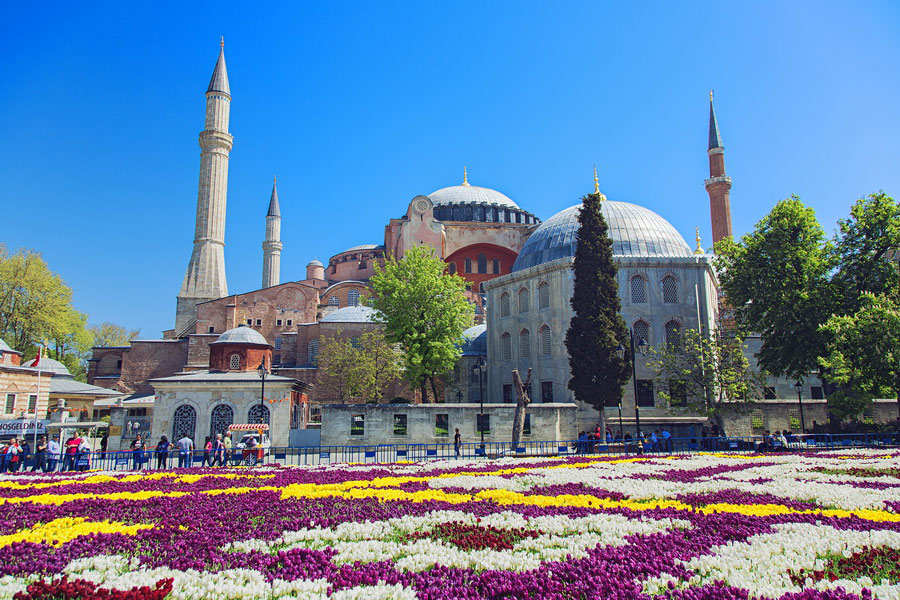Turkey (Türkiye) represents a year-round experience, as its location – covering two continents and neighbouring a third – allows travellers to enjoy hot, dry summers, mild winters, snowy adventures, and uncrowded activities during the majestic spring and golden autumn. While summer remains the high season, the best time to visit Turkey is in spring, from March to May, when tulips bloom, birds return from the Mediterranean to central and northern regions, temperatures are mild, and you can enjoy both coastal activities and skiing on the lingering snow at winter resorts.
What to do in Spring in Turkey?
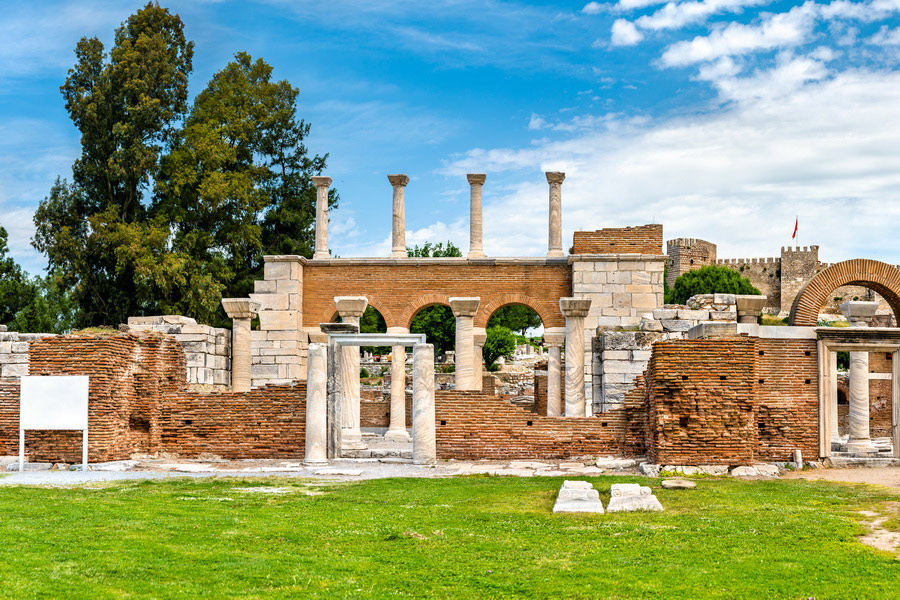
Springtime in Turkey brings a mild climate and lower prices, averting the summer's intense heat and crowds, creating a perfect atmosphere to unwind on the beach and discover the country's cultural and natural treasures. As the temperature ranges from 20 °C (68 °F) to 26 °C (78.8 °F), Turkey guarantees a delightful outdoor adventure during spring with its parks, open bazaars, ancient landmarks, and unique festive activities. Saklıkent National Park (Saklıkent Millî Parkı) and its canyon in Muğla Province, 50 kilometres away from Fethiye, and Göreme Historical National Park (Göreme Tarihî Millî Parkı) in rocky Cappadocia, with its venerable cave churches grant adventurers a pleasant open-air excursion.
Ephesus (Efes), near Izmir, is a marvel at its ancient brilliance without battling extreme heat. Its vast ruins, including the iconic amphitheatre, are under pleasant sunshine on your Turkish spring trip. Nearby, Pamukkale’s travertines and the ruins of Hierapolis are also at their best, with fewer visitors and cooler temperatures, making exploration safe and enjoyable.
Istanbul comes alive in spring with its historic streets, where tulips brighten parks during the Tulip Festival, and the sun shimmers over the Bosphorus. Additionally, the International Istanbul Film Festival (Uluslararası İstanbul Film Festivali) celebrates global cinema in April.
In Cappadocia, the mild days are ideal for trekking its fairy chimneys and soaring in a hot air balloon without winter’s chill. For beach vibes, Fethiye and Antalya cater to calm shores, stunning views, and more affordable accommodations than peak summer.

In springtime, Samsun is ideal for exploring its coastal charm, agricultural markets, and historic sites, as the city played a pivotal role in the Turkish War of Independence and dates back its origins as the Milesian colony Amisus.
Spring is also the perfect time to visit Ordu, when its lush plateaus, historic landmarks, and pristine beaches come alive with vivid colours and festivities, allowing you to explore its hazelnut orchards stretching out for miles in all directions.
Additionally, the flowering month in Sivas reveals a land where history and nature intertwine, with ancient valleys, Seljuk-era monuments, blooming landscapes, and a timeless charm. Known for the legendary Kangal Shepherd Dogs – fearless guardians against bears – Sivas captivates with its heritage and unique spirit.
Spring is also a time for festivals, from Antalya’s International Theatre Festival to the Ankara Music Festival, showcasing Turkey’s cultural scene, while spring bursts alive with Nevruz, a celebration where the earth renews its vows with life, ancient customs unfold like wildflowers, and the air hums with the promise of new beginnings.
What to Do in Summer in Turkey?
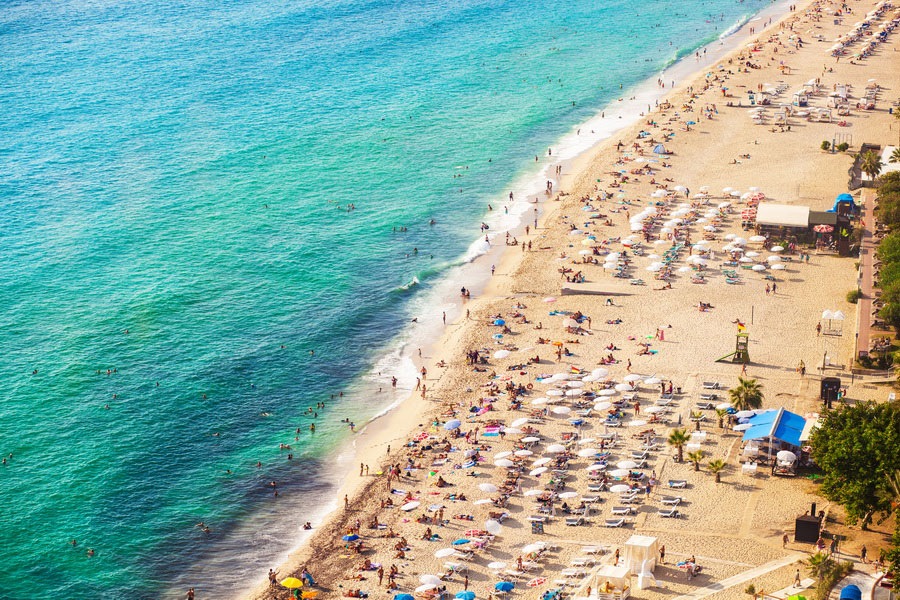
Summer in Turkey is more than just a season; it’s a series of sun-drenched getaways and cultural immersion, with temperatures ranging from a balmy 30 °C (86 °F) along the Mediterranean coast to a sizzling 40 °C (104 °F) in inland regions.
Gliding over Cappadocia’s iconic rock formations in a hot air balloon at dawn, where the gentle summer breeze promises uninterrupted flights and views to last a lifetime. For a coastal retreat, Antalya’s beaches, from the serene Kaputaş to the lively shores of Alanya, set the gold standard for sun-soaked relaxation. Şanlıurfa, known as the City of Prophets and believed to be the birthplace of Prophet Abraham, is a sacred destination rich in faith, history, and archaeology, offering unforgettable cultural and culinary experiences. Şanlıurfa, believed to be the birthplace of Prophet Abraham, is a sacred city where faith meets history, and unforgettable summer experiences meet ancient sites, colourful traditions, and savoury flavours.
İznik, once a cornerstone of Christendom rivalling Jerusalem and the Vatican, whispers its sacred past through the echoes of the Nicene Creed and the councils that shaped history. Now a UNESCO candidate, its Hagia Sophia and Roman Theatre stand as guardians of time, while the İznik Lake (İznik Gölü), famed for its sunsets and fresh-caught fish, paints a picture of serene summer days.
In the golden embrace of summer, Tekirdağ unveils its brilliance with Ottoman elegance, broad beaches, and vineyards that host lively wine festivals, while sea breezes, ancient ruins, and thrilling water sports etch unforgettable memories into every sunlit day.
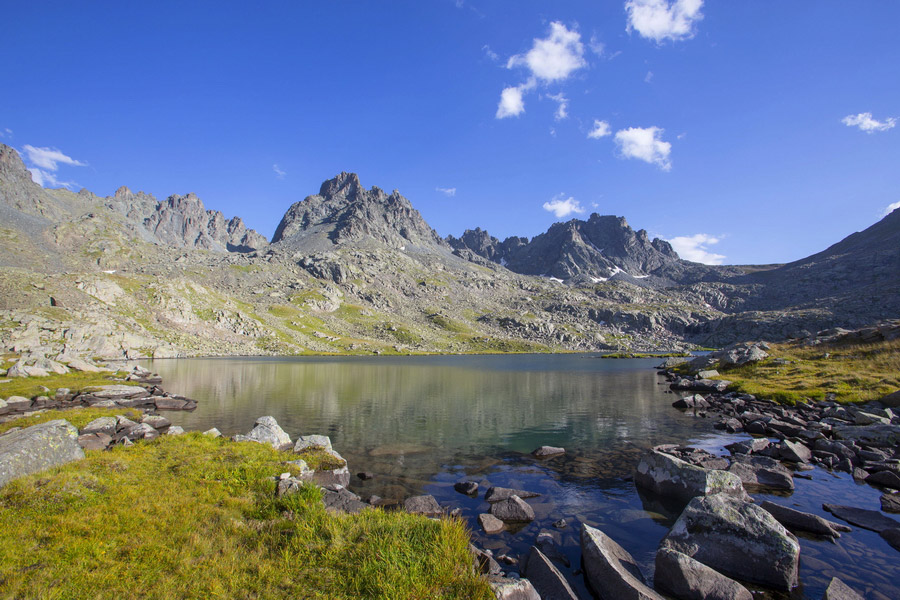
Bodrum, with its new-found sophistication, claims chic marinas and the possibility of brushing shoulders with celebrities, while Marmaris delivers a buzzing blend of entertainment and idyllic landscapes. For those craving for authenticity, Akyaka or Datça provide a quieter charm, pairing picturesque beaches with echoes of traditional Turkish life.
Summer is the impeccable time to visit Rize, where verdant tea plantations on high terraces – at the heart of Turkey's tea production – seamlessly fuse with the landscapes of the Kaçkar Mountains (Kaçkar Dağları). Adventure awaits with activities like hiking, rafting, and jeep safaris, while the warmth of the locals, traditional music, and the refreshing taste of Rize tea create an unforgettable experience.
In the sunlit heart of summer, Kahramanmaraş unfolds oxygen-rich plateaus, cool mountain retreats, and shimmering lakes, where ancient artefacts are a beacon of history, and every moment is sweetened by its legendary ice cream and fragrant salep.
In the peak months of July and August, when the heat rises and crowds swell, the country’s captivating blend of history, natural beauty, and warm hospitality ensures an experience that transcends the ordinary. Turkey in summer is a love affair you’ll carry long after the tan fades.
What to Do in Autumn in Turkey?
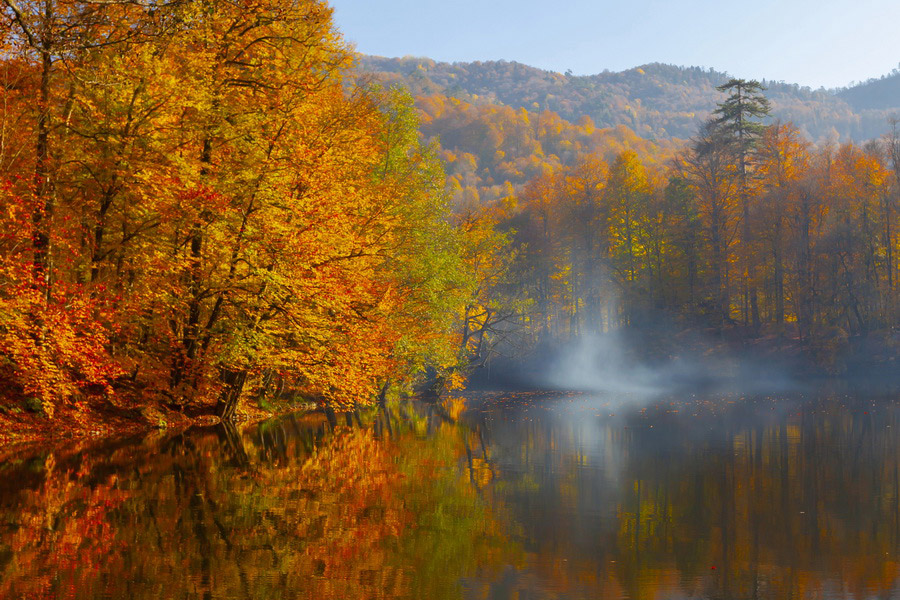
Autumn in Turkey, the golden-hued “Yellow Summer,” is a season bursting with sensory delights. From the mellow warmth of September, where temperatures remain around 25 °C (77 °F) in coastal regions, to the chilly charm of November’s 15 °C (59 °F), this is the ideal season to savour Turkey in its fullest form. For instance, in Yedigöller National Park (Seven Lakes National Park – Yedigöller Millî Parkı), located in the northern part of Bolu Province, trees are tinted with the extraordinary hues of green, yellow and red, making it a perfect getaway for the Best Autumn Holidays.
In September, the crystal-clear waters of Patara Beach (Patara Plajı) or the mythic Zeus Cave (Zeus Mağarası) in Kuşadası are ideal ventures. For those drawn to alpine serenity, Uludağ, near Bursa, suggests a prelude to winter with its crisp air and scenic panoramas. October shifts the focus to healing and exploration, with Pamukkale’s surreal travertine terraces and Hatila Valley National Park’s (Hatila Vadisi Millî Parkı) kaleidoscope of autumn colours for nature lovers. By November, Cappadocia’s dreamy hot-air balloons, Borçka's lush forests, and Van Lake's (Van Gölü) serene beauty invite travellers to embrace the calm before winter.
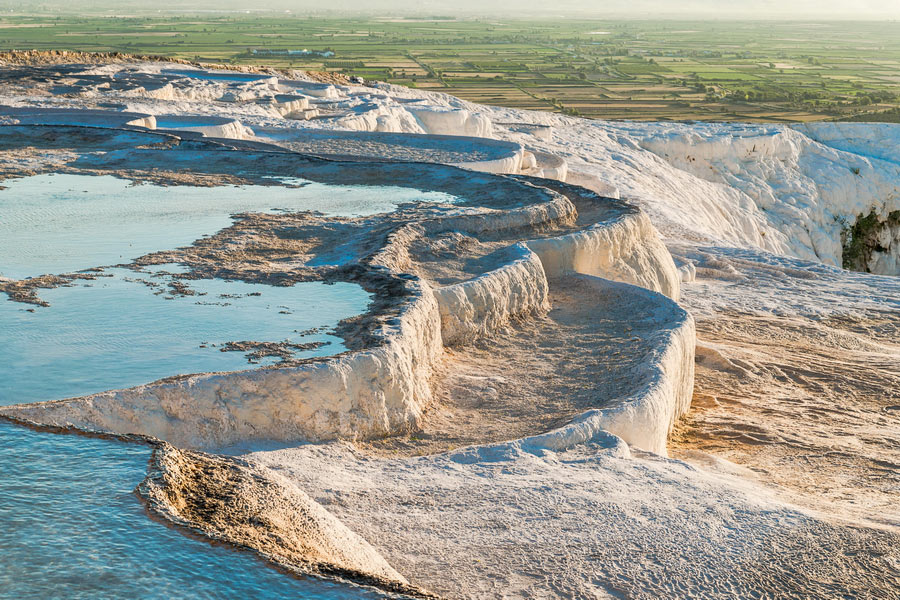
Plus, each month caters for exceptional dishes, feasts, plants, smells, sights, and sounds. September delights in figs and the smoky allure of Adana şiş kebab, October tempts with herbal teas and stuffed courgette flowers, while November is celebrated with the sweetness of pumpkin desserts and the savoury boza. Isparta’s rose gardens or the earthy aroma of soil after rain is something you need to inhale. The textures of bay leaves or intricately embroidered handiwork and the symphony of rainfall, cascading waterfalls, or seagulls over Istanbul's islands are what create an unforgettable Turkish autumn holiday. Autumn in Safranbolu tells the stories of the genius of Ottoman-era architecture, with its well-preserved homes and streets, all set against a backdrop of breathtaking seasonal colours.
Edirne, with its golden autumn hues, unfolds like a living museum where Ottoman heritage, UNESCO treasures, and the quiet grace of its historic bridges invite you to savour the season's reflective charm.
By Lake Manyas (Manyas Kuşgölü), Kuşcenneti National Park (Kuşcenneti Millî Parkı) transforms into an autumn sanctuary, where migrating bird colonies flocking from Europe and Asia fill the golden skies, delivering a serene spectacle of nature’s changing rhythm.
Whether trekking Anatolia’s ancient Lycian Way, luxuriating in thermal springs like Sandıklı Spa, stopping by a caravanserai on the Silk Road, or witnessing Ephesus come alive with operatic performances, autumn in Turkey is a masterpiece of experiences and encounters.
What to Do in Winter in Turkey?
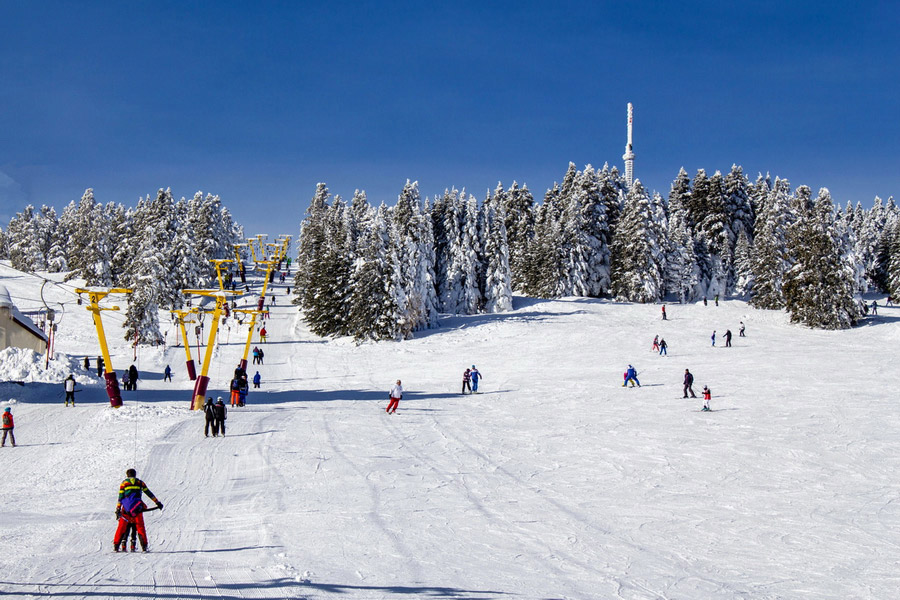
Turkey's winter season recreates the country into a varied wonderland of snowy peaks, soothing retreats, and vivacious celebrations. Temperatures typically range from 2–6 °C (36–43 °F), dropping even lower in the interior regions. The ski resorts of Uludağ, Palandöken, and Erciyes invite thrill-seekers to indulge in world-class slopes and modern facilities. Uludağ, known for its festive atmosphere, draws visitors for both skiing and après-ski experiences, while Palandöken and Erciyes provide a quieter, more focused escape into nature's winter embrace.
Beyond the slopes, Turkey's natural beauty in winter is a tranquil escape. Pamukkale’s thermal springs, surrounded by the frosty white travertine terraces, will rejuvenate your Turkey winter holidays. The snow-covered hills of Lake Abant (Abant Gölü) spread a peaceful charm, ideal for a winter getaway with peaceful strolls or cosying up by the fireside.

In Istanbul, the winter months, Christmas and New Year's Attractions, are marked by twinkling lights and festive decorations along the Bosphorus. Historical hammams provide warmth and relaxation after chilly walks through the city’s boisterous streets. In the fairy-tale landscapes of Cappadocia, snow blankets the unique rock formations, creating an unforgettable view from hot-air balloons that soar above the winter wonderland below.
For those seeking a milder winter escape, Antalya and Bodrum along the Mediterranean coast whirl an enchanting mixture of ancient ruins, mild temperatures, and blissful beaches. To experience a true winter wonderland, Kars is a hidden gem, where frozen Lake Çıldır (Çıldır Gölü) invites ice fishing and horse-drawn sleigh rides across its pristine surface. Whether for adventure or relaxation, winter in Turkey offers an assortment of experiences and the best winter destinations awaiting to be explored.


